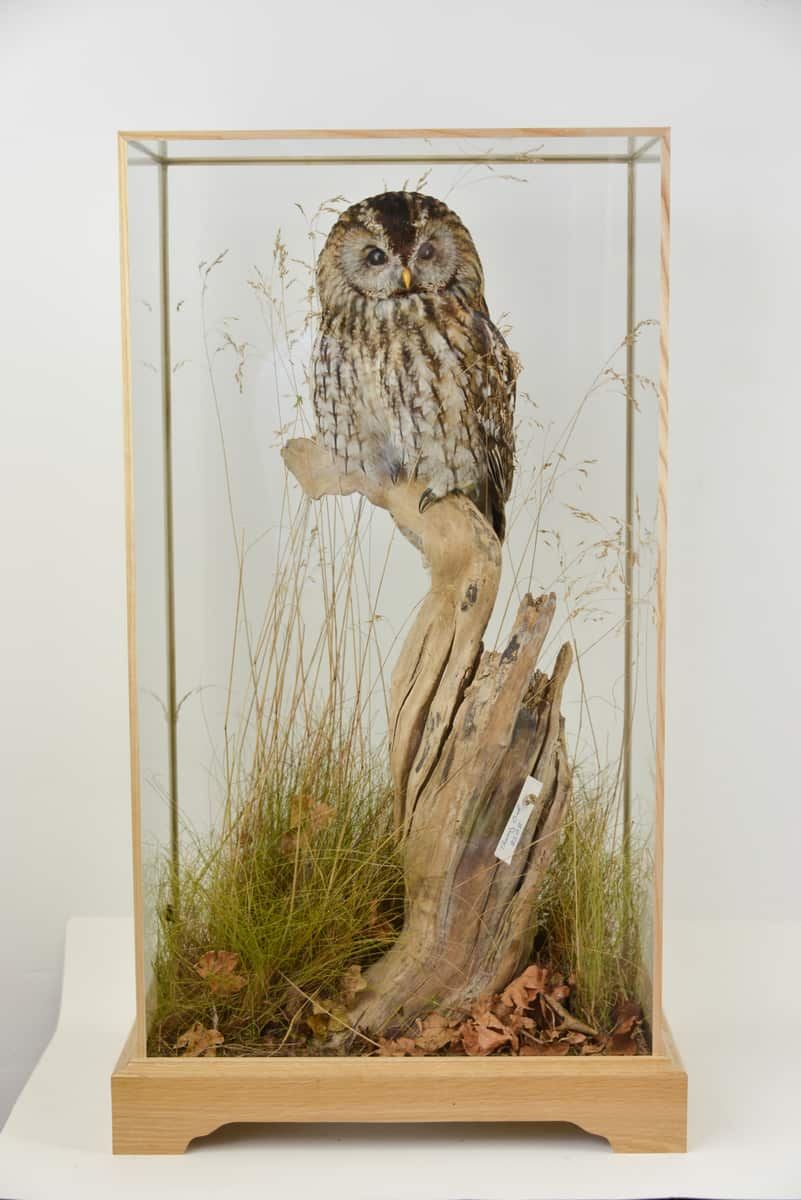|
About Modern Taxidermy
Taxidermy today has moved on from the way that Victorian taxidermists conducted their studies. We have very strict laws that prevent the illegal killing of certain birds and animals which the Guild fully supports and this legal information is shared with all members. These days many specimens are found at the roadside. Road traffic is the largest cause of death to wildlife in the UK. Consultants to the British Trust for Ornithology (BTO) estimate that almost 2 million creatures are killed on our roads every week (104 million per year) and although many are damaged beyond repair, a large percentage are left at the roadside with little damage. The use of these specimens presents no threat to our wildlife. Specimens are still mounted by taxidermists that have been shot or killed, but the Guild only supports that activity if it is done strictly within the law. The majority of taxidermists have a deep knowledge and appreciation of natural history as this helps them to accurately preserve the specimen and recreate the natural living environment, so tend to be sincere naturalists. Taxidermy is a highly skilled craft and the quality of work depends on the knowledge, patience and artistic ability of the exponent. Modern materials are available and techniques are constantly being updated, giving far better results. We all know the image Victorian taxidermy left behind as a legacy - glass domes crammed with exotic birds or black boxes containing grotesque caricatures of foxes and squirrels. Taxidermy became fashionable and this demand led to a great many untrained taxidermists taking up the craft but there were only a few who had both technical and artistic ability. Now the Guild is working to maintain and develop the current standards whilst helping new members to attain high standards of work as can be seen in our Gallery. To say that a taxidermist stuffs animals is misleading. In fact the skin is removed, preserved and arranged around a model of the original body. A good knowledge of anatomy is essential to create the artificial body or 'form'. Artistic talent is needed to finish the specimen and set up a natural display. A good taxidermist is a sculptor, artist and naturalist rolled into one. Taxidermy which is properly preserved, well mounted and tastefully finished takes time, and will therefore be more expensive than inferior work. It will however, stand the test of time and appreciate in value. |
|
The Guild of Taxidermists wishes to point out that taxidermy is often wrongly linked with other trades and traders in animal skins and derivatives.Taxidermy is a perfectly legal and respected trade which is governed by strict regulations, covered by the Wildlife and Countryside Act 1981 and the Convention on International Trade in Endangered Species of Wild Fauna and Flora (CITES). We, like any other profession, wish to remain free of association with the criminal element. The Guild has in the past, and will always assist the authorities at any time in cases where the trade is brought into disrepute. The Guild is working to secure a future for legitimate taxidermy and supports the police and the Royal Society for the Protection of Birds (RSPB) in their action against the illegal taking of wildlife. It is not illegal to possess taxidermy provided the animal has not been illegally killed. Reputable taxidermists will attach a trade label to their work and supply any relevant licence and full data. | Taxidermists obtain specimens from a variety of legal sources such as:
|


